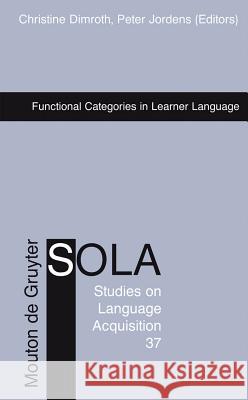Functional Categories in Learner Language » książka
Functional Categories in Learner Language
ISBN-13: 9783110216165 / Angielski / Twarda / 2009 / 359 str.
Language acquisition is a developmental process. Research on spontaneous processes of both children learning their mother tongue and adults learning a second language has shown that particular stages of acquisition can be discriminated. Initially, learner utterances can be accounted for in terms of a language system that is relatively simple. In studies on second language acquisition this learner system is called the Basic Variety (Klein and Perdue 1997). Utterance structure of the Basic Variety is determined by a grammar which consists of lexical structures that are constrained, for example, by semantic principles such as "The NP-referent with highest control comes first" and a pragmatic principle such as "Focus expression last." At some point in acquisition this lexical-semantic system is given up in favour of a target-like system with morpho-syntactic features to express the functional properties of finiteness, topicality, the determiner system, etc. Insights into how this process evolves may also provide an answer to the question of why it takes place. Within this functional perspective on language acquisition research focuses on questions such as the following.
1. What is the driving force behind the process that causes learners to give up a simple lexical-semantic system in favour of a morpho-syntactic functional category system?
2. What is the added value of morpho-syntactic properties of inflection, word-order variation, definiteness and agreement?
3. Why is it that in cases of specific language impairment it is mainly morpho-syntactic properties of the target language that are affected?











